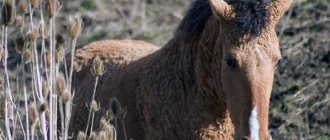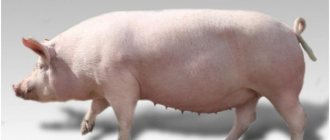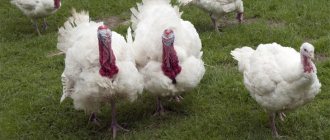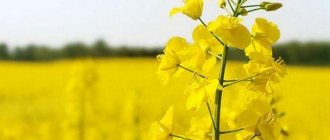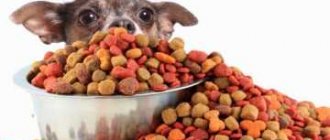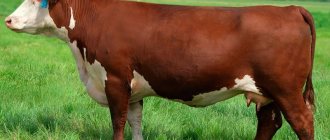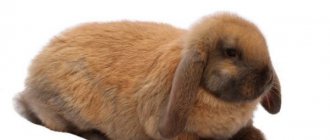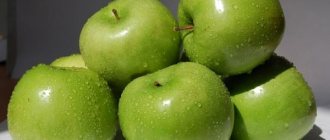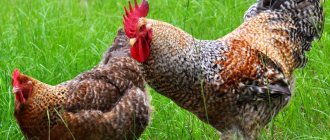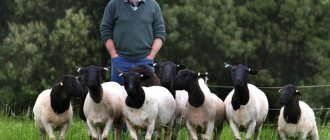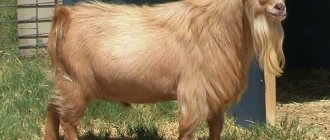Keeping and breeding fat-tailed animals
Animals of this variety can adapt to almost any climatic conditions in which other breeds of sheep are unlikely to survive.
Fat-tailed sheep can easily get used to life in desert and mountainous areas, as well as in the northern regions of different countries. The fat-tailed sheep is an unpretentious animal. It has become easier to keep sheep than it was a couple of centuries ago, and their productivity has increased.
In addition, fat-tailed sheep are a picky breed, since in the warm season they independently obtain food in the pastures, and during this period they do not need any feeding at all. In addition, the vegetation in the meadow does not necessarily have to be diverse and highly nutritious; in any case, the animals will quickly gain weight.
But in the autumn-winter period and early spring, when vegetation has not had time to cover the pasture area again, animals should be transferred to special pens for maintenance. And the diet of sheep at this time should consist of:
- hay;
- grain crops;
- shoots of fruit trees.
The daily amount of feed for fat-tailed sheep is:
- grass hay – 2 kilograms;
- grain crops – 0.5 kilograms.
In addition, fat-tailed sheep can be fed with root vegetables grown in the garden, but care must be taken that the root vegetables are not spoiled.
During grazing, the flock must be monitored. To do this, you can use the help of a shepherd or a specially trained shepherd dog, who can bring down the animals in a dense group. A lost sheep, compared to cows, is unable to find its way back.
In the process of breeding this type of farm animal, certain requirements must be adhered to:
- Since the breeding of fat-tailed sheep is carried out in South Asian and North African territories, where the weather is constantly warm, the animals are kept almost all the time on pasture lands. Sheep pens can be built, but without insulation, since insulating buildings is pointless.
- Haircuts are carried out twice during the year - in autumn and spring.
- Although the fat-tailed sheep is a strong and resilient animal in appearance, representatives of this breed are susceptible to certain diseases. So, for the purpose of prevention, it is necessary to regularly contact a veterinarian so that he examines the livestock, and also immunizes the animals.
- Longtail sheep enjoy walks in the pastures, but should not be abandoned without supervision. A lost individual will not be able to find its way home, so you need to monitor the actions of the animals.
- Representatives of this breed need to be fed pasture. It forms the basis of the diet in the warm season, when there is a lot of different vegetation on the pasture. Only in small amounts do they need to be fed concentrated feed and vegetables during this period, this helps to normalize digestive function. As cold weather approaches and there is less grass on the fields, sheep should be gradually switched to a winter diet consisting of concentrates, silage, straw, vegetables and hay.
- It is prohibited to feed fat-tailed sheep with dried forest or marsh herbs, as well as spoiled root vegetables. Such food can cause intoxication, as well as negative consequences.
- Animals can mate as early as 5-8 months of age. Although these are only approximate dates. The best option is to focus on the condition and development of the individual. For fertilization, only grown-up rams and ewes – developed, healthy and strong – can be used.
- Lambing most often occurs without consequences and in a short time.
- Labor progresses quickly, and assistance from a livestock breeder or veterinarian is required only occasionally. Newborn lambs must be cleaned of mucus, placed in a warm place, and fed with mother's milk.
- Babies begin to walk and graze on the second day after birth. The queen looks after the newborn, so there are no difficulties with raising livestock.
The main reasons for the popularity of hissar
Today, the development of sheep farming in Russia is essentially experiencing a rebirth. People are increasingly becoming interested in raising sheep at home. For some, this is a good financial support along with other income, for others it is the easiest way to provide their family with quality meat, wool and other products, for others it is the only opportunity for decent income. There are even those for whom raising sheep becomes something of a hobby. There are a number of undeniable advantages in breeding hissars:
Plus the first one is economic.
Sheep are animals that do not require large economic investments. Feed costs are small, because they spend almost the entire year grazing, eating free pasture. The buildings for them are also low-cost. They are built according to the principle: as long as there is no wind and no dampness. A small exception is the only premises for lambing. And even then, if you organize spring lambing rounds correctly, you can do without them. In addition, these sheep can graze on very poor pastures and easily tolerate interruptions in watering.
The second plus is environmental.
Animal meat is grown on natural feed, without any chemical additives, and its nutritional qualities are in no way inferior to beef or pork. In addition, the meat of hissars is the most delicious and valuable among other breeds. Hissar wool is a good material for making felt and felt. Sheep milk is used to make delicious and healthy cheeses. Moreover, the queens of this breed are among the most milky. Sheep's milk is superior in nutritional value to cow's milk, contains many essential microelements and is absorbed by the human body by more than 99%.
Plus the third one is temporary.
It takes livestock farmers much less time to develop a flock than, for example, when breeding cows, horses or other domestic animals. This is due to their rapid growth. In terms of early maturity, the Gissars have no equal among their brothers. You can increase your flock by 2-3 times in literally 2 years. In addition, many people begin to keep lambs in parallel with the breeding of other animals.
Plus the fourth one is aesthetic.
Who doesn't love holding and petting a little curly-haired lamb? There are probably very few such people. For reuniting children with nature, for instilling in them a sense of love and care, these are perhaps the best animals. They will never harm a person, bite him or kick him, for example. In addition, children, especially urban ones, have an excellent chance to find out where felt boots, warm mittens, blankets and much more come from. The listed advantages are quite enough to seriously think about breeding hissars on your farm.
Gissar breed of sheep: video
Before you start raising Hissar sheep, you should objectively evaluate the advantages and disadvantages of the breed, which will help determine whether it is suitable for breeding in your climatic region.
Among the advantages of the Gissar sheep breed, it is worth highlighting:
- Precocity: young individuals quickly gain weight and are ready for slaughter already at four months of age;
- High adaptability: animals tolerate sudden temperature changes, cold and heat well, but can get sick in high humidity;
- Unpretentiousness in feeding: sheep independently find food even on pastures with sparse vegetation and gain large mass even without special feed additives.
Thanks to these features, as well as the high slaughter yield of meat, raising Gissar sheep is economically profitable, since the farmer will not have to incur additional costs for purchasing feed or arranging special premises for keeping the flock.
Along with its advantages, the breed also has some disadvantages. Firstly, it can only be bred to produce meat and lard, since animal wool has no industrial value. Secondly, it will not be possible to quickly increase the number of animals, since most females produce only one lamb per lamb.
The Gissar breed of sheep is considered very unusual. A video will help you verify this, which not only provides a description of the animals, but also provides recommendations for their maintenance and breeding.
The features of this breed are described in more detail in the video.
Care
Gissar sheep are unpretentious animals both in food and in maintenance, but you still need to follow certain rules. Find out what are the characteristics of the Kuibyshev breed sheep here.
Nutrition
Males of the Hissar breed can feed in meadows where there is sparse vegetation. They can eat any grass and green plants. So summer nutrition in the paddock comes down to serving clean drink and cut grass. The sheep are able to obtain the rest of their food on their own in the meadows. Maybe
Description of Gissar sheep
The Gissar breed of sheep has a rather non-standard appearance, so they cannot be called cute and attractive. The appearance features are:
- Body disproportion: large torso with a very small head.
- Thin legs.
- Rough, hard wool.
- Well developed body.
- Powerful sternum 35 cm deep.
- The fat tail bag is of impressive size (in sheep of the tallow and meat-greasy varieties).
- The height at the withers of rams is up to 85 cm, and that of sheep is approximately 80 cm.
- The average weight is quite impressive: Gissar rams weigh 150 kg, while greasy animals can gain up to 190 kg! And sheep are less impressive with their weight, about 90 kg, with a maximum weight of 150 kg.
- A short, wide neck, which gives the impression that the animal’s head grows directly from the body.
- The small head has a hooked nose.
- Droopy long ears.
- There are no horns. But some individual individuals, as an exception, may have small horns.
- The tail is small (about 10 cm).
The color can also be different and depends primarily on the area where the sheep is bred:
- Dark red.
- Black.
- White.
- Brown with reddish tint.
Wool itself has no value, so sheep farmers mercilessly shear it twice a year so that the animals do not suffer in the heat, and harmful insects such as ticks and fleas do not find refuge in the curls.
Outwardly, it may seem that these sheep are unattractive, but productivity indicators make you forget about this drawback.
Sheep and rams have a fat tail, which is similar in function to a camel's hump; fat and water accumulate here. Therefore, in winter or in dry summer, the animal can, in the absence of food, receive nutrition from those substances that have accumulated in this “bag”. An interesting fact is that thrifty sheep store fat not only in the fat tail, but also under the skin, on the internal organs.
Advantages of the breed:
- Very unpretentious to the vagaries of nature.
- They feed on almost all pasture and can easily find food for themselves even in semi-desert conditions.
- They gain weight very quickly - lambs are ready for slaughter at the age of 3-4 months, allowing you to get nutritious, delicious meat, which can be sold at an impressive price.
- Maintenance is simple; feeding gives the sheep farmer the opportunity to save money.
- Sheep thrive both on mountain slopes and in steppes on pastures.
- Capable of traveling long distances.
- They can be used for crossing with other breeds, improving their meat and fat qualities.
Disadvantages of the breed:
- Small offspring - one ewe produces only one lamb.
- Coarse wool, which is very problematic to use in textile production.
At the same time, experts note that, despite these disadvantages, the breed copes very well with the functions assigned to it - producing meat and lard, and good wool and abundant offspring were not initially the goals of breeders, so you can turn a blind eye to them.
Breeding Gissar sheep
To obtain offspring, no more than 2 rams are left for the entire flock, choosing the strongest and healthiest males. Mating occurs at different times, and offspring appear throughout the year. Sexual maturity in females occurs at approximately 7-8 months, and if there are not enough breeding rams, artificial insemination is performed. Gestation, or the period of pregnancy, lasts on average 145 days, and as soon as the first signs of pregnancy appear, the females are transferred to the best areas of pasture.
During pregnancy, females are transferred to the best pasture areas
Before lambing, the premises are cleaned and the bedding must be changed. As a rule, in a healthy, strong female, lambing takes no more than 30-40 minutes and occurs without complications. In multiple pregnancies, the interval between lambs is 7-10 minutes. No special human intervention is required in this natural process, except to clear mucus from the newborn baby’s nostrils. After this, the lambs are placed near the mother and left alone.
Before lambing, the premises are cleaned and the bedding must be changed.
Gissar lambs have a high survival rate, and if there were no complications during lambing, the babies can be released onto the grass already on the fifth day. Of course, weather conditions should be taken into account: on a cold, windy or wet day, it is better for the lambs to remain in the barn. For the first five days, the babies' only food is mother's milk. If the female dies during childbirth, the lamb is placed with another sheep or transferred to artificial feeding and given cow's milk.
For the first five days, the lambs' food is mother's milk.
When the babies go out onto the grass and begin to graze on their own, they are gradually introduced to grain feed, and by the end of the first month their daily intake should be 50 g. By the fourth month, the amount of concentrates should be 300 g per day. In winter, bean hay must be added to the diet.
After the first grazing, the lambs begin to be accustomed to grain feed.
Diet of growing lambs.
| Age | Type and quantity of feed |
| 4-6 months | 0.5 kg of grass hay 0.5 kg of fresh chopped vegetables 300 g of mixed feed 150 g of cake 4 g of table salt |
| From six months | 1 kg meadow hay 0.5 kg chopped vegetables 300 g crushed grain 6-7 g table salt |
Already at 3-4 months, lambs can be slaughtered, but in order to get a larger meat yield, it is advisable to feed them until six months. Fattening implies a separate diet:
- 700 g clover or bean hay;
- 1 kg of vegetables;
- 5 kg silage;
- 450 g of concentrated feed.
To accelerate muscle growth, it is recommended to use concentrates that contain the most protein - corn, barley, peas. Animals selected for fattening are transferred to the sheepfold with pregnant and lactating females and care is taken to ensure that the feeders are constantly full.
Animals selected for fattening must be fed constantly
Nutrition
A sufficient amount of food rich in vitamins and access to clean water are the basic rules for the proper maintenance of hissars. In winter, the basis of the diet is hay and cereals. During this period, it is important to avoid vitamin deficiencies. Therefore, it is recommended to buy mineral slimes for sheep. They are placed near water, and the animal sucks on them as needed, receiving vitamins and minerals. Hissars can eat kitchen waste:
- peelings of vegetables and fruits;
- bread.
Those sheep that are kept in pens without grazing need additional feed. Containers with food for them should be located above floor level (approximately at the level of the sheep's chest) and they must be secured. Otherwise, the sheep will scatter the feed and trample it.
In winter, each sheep is given 500-600 g of crushed grain and corn silage. It is required to give table salt to sheep at the rate of 10 g per day per individual. Salt is a source of minerals. Gissars should not be given sugar beets; they quickly develop diabetes.
Lambing procedure
Sheep are fertile. At the same time, the survival rate of newborn lambs is high and close to 100%. Babies do not require special conditions in organizing care and maintenance. After a few hours, they are already able to stand firmly on their feet, and the mother has developed maternal instinct. Females take care of their offspring without outside help.
Pregnant females need enhanced nutrition, which contains many vitamins and microelements. A few days before lambing, it is necessary to cut the hair from areas near the udder. In this case, you should prepare the room where the birth will take place. A clean new bedding is laid on the floor. On the eve of giving birth, the sheep's udder swells, its belly drops, and everything under the tail swells and takes on a red tint.
The lambing process usually proceeds without complications and the animal copes on its own. However, if possible, you can invite a veterinarian to be on the safe side. Human help will only be required to free the lamb from the amniotic membrane and remove mucous components from the respiratory canals.
During the first 2-3 hours after birth, the lamb should be fed its mother's milk. If the female is unable to do this on her own, the farmer is required to milk the milk and give it to the baby.
Weak individuals need complementary feeding through baby bottles. At the first stage, milk is given in small portions, and then its volume is increased. It is acceptable to use substitutes if natural milk is not enough. From 1 month of age, lambs receive concentrates as part of their feed.
All breeds of sheep are characterized by a stable lactation process, and therefore the animals calmly feed 2-3 lambs. At the same time, milk productivity reaches 150 liters.
Species features
Description of the breed
Gissar sheep belong to the fat-tailed breeds, a characteristic feature of which is fatty deposits in the tail part - fat-tailed sheep. They look like voluminous convexities in the sacrum area, and depending on the subspecies of the breed, they can have different sizes:
A characteristic feature of the breed is fat deposits - fat tails.
- in sheep of the fat-tailed type, the fat deposits are the largest and the weight of the fat-tailed sheep can reach 55-60 kg, which is almost a third of the total weight of the animal itself;
- the meat-tail type has a smaller fat reserve, the tails of such sheep are pulled higher and are at the level of the back;
- In meat type sheep, the tails are the smallest, highly tucked up, and therefore the least noticeable.
The sheep themselves have a rather inconspicuous appearance: they have a long dense body, thin legs, and a thick short neck. A massive, hook-nosed head with drooping ears does not make the animal attractive either. The coarse wool is usually brown in color, although it may vary in shades depending on the region of residence. The quality of the wool is very low and has no commercial value, so hissars are sheared more for reasons of hygiene. The animals do not have horns; in some cases, very small horns may appear on males.
Gissar sheep do not have an outstanding appearance
The height at the withers for rams is on average 85 cm, for females it is about 80 cm. The physique is very strong, the bones are well developed, and the chest is wide. The size of the tail of an adult sheep is usually within the range of 30x40 cm, in rams it is 40-50 cm. The average weight of a female is 80-90 kg, for the largest it can reach 120 kg, for males it is about 50 kg more. With proper care, an adult, well-fed ram can grow up to 190 kg.
Gissar ram
Productivity
The meat yield when slaughtering Gissar sheep is at least 60% of the total weight, which is a very high figure. In addition, the meat has excellent taste and nutritional value, and contains less cholesterol than pork and beef. If we consider that such sheep grow very quickly, and by four months the lamb gains about 50 kg, then the benefits of breeding hissars are obvious. Slaughtering of animals is practiced mainly at the age of 3-4 months, since during this period their meat is the most delicious.
The meat of Gissar sheep has a great taste
In addition to meat, each sheep receives from 25 to 40 kg of fat tail fat, which also has its own value. It is used as food mainly by the peoples of the Caucasus and Central Asia, since for Europeans its taste characteristics are somewhat specific. At the same time, tail fat contains many useful substances and is easily digestible, unlike lard. As an external remedy, it is widely used in folk medicine because it has warming and regenerating properties.
Fat tail fat
Milk productivity indicators in Gissar sheep are average - 104-122 liters for the entire lactation period (120-170 days). To obtain a larger volume of milk, lambs are weaned from their mothers already at 3-4 days and are artificially fed. After the fifth lactation, milk yield gradually decreases to 100-200 ml per day, so keeping these sheep for milk for a long time is not profitable.
From 3-4 days lambs are fed artificially
The wool yield is very low - up to 1.6 kg for rams and up to 1.4 for females per shearing. The wool is of poor quality, hard, with a lot of awn, unsuitable for fine dressing. Technical felt is made from it - felt, which is used for insulation, upholstery, as bedding and for fire extinguishing. It is advisable only for owners of large flocks to collect and process such wool; with a small number of livestock, the expenditure of effort and time does not pay off at all.
Gissar sheep are sheared more for reasons of hygiene; their wool is practically valueless
In terms of fertility, Gissar sheep are also inferior to other breeds - the maximum figure is 115%. This means that no more than 115 lambs are born per 100 queens, that is, females rarely give birth to even two lambs, and three only in exceptional cases.
In terms of fertility, Gissar sheep are inferior to other breeds
Preparing the sheepfold
Sheep are kept in specially equipped sheepfolds located in a fenced area or paddock.
There are sheepfolds for general use and group ones. The first provide for the maintenance of representatives of different ages and breeds. The second ones are created for individual groups, classes of animals, which are divided by age. Holding times vary by region.
Keeping sheep all year round is quite expensive. The money spent will pay off only for those owners who specialize in the production of meat delicacies. After all, the budget for food supply increases several times.
The benefits of this content:
- control over sheep diet;
- meat products of the highest quality;
- minimum level of disease and death.
- minimal dependence on weather changes
- pure wool, which does not require several stages of cleaning, only one is enough.
How to prepare for keeping sheep
In order to double the productivity of sheep products, it is important to monitor compliance with certain standards during the period of preparation for keeping
- Organize deworming and examination by a veterinarian.
- If you plan to transfer the flock to pasture, such manipulations must be carried out consciously and gradually. During the first weeks, the animals are supplemented with coarse food.
First you need to study the content rules:
The air is dry, there is a lot of sunlight. There are a number of standards that determine the dimensions of a room. Calculation per sheep - up to three square meters. The floor rises several centimeters above ground level. The windows are located at a meter height from the floor covering. Nursery feeders
It is important to create quick and convenient access to food for all sheep. Control room temperatures. For adults - a minimum of six, and for lambs - a minimum of fifteen degrees. Lighting
If natural sunlight is not enough, artificial light is suitable, because its insufficient concentration can negatively affect the health of animals. Access to water must be provided at least twice every 24 hours. The main thing to understand is that only some breeds can tolerate a lack of water normally.
Access to the drinking bowl
During maintenance, the owner’s primary task is to improve productivity, so it is important to minimize the disadvantages of maintenance and control zoohygienic standards. The quality of wool for industrial use is influenced by this criterion.
If the owner does not clean the premises in a timely manner, urea impurities contained in sheep urine are absorbed into the wool, having a destructive effect. This not only affects the smell, the hair becomes depleted and acquires a yellow pigment. The price of such wool is minimal.
General characteristics of the Gissar breed
Sheep of the Gissar breed are recognized as leaders among their relatives in terms of the yield of fat and meat of the highest quality. In addition, nature generously endowed them with incredible endurance and superbly developed immunity. These characteristics allow sheep farmers to keep the Gissar breed in fairly harsh conditions. Flocks of Gissars can be found on the high mountain slopes. Animals feel equally comfortable both during the onset of cold weather and under the influence of sweltering heat.
General external signs and photos of the Gissar breed of sheep
To be honest, you can’t call such a sheep a beauty. She has:
1. Elongated body; 2. Straight and long legs 3. Tight, compact torso; 4. Short hair; 5. Small head (with a hump at the base of the nasal part of the skull); 6. Very long hanging ears; 7. Short wide neck; 8. Protruding chest; 9. Coat color: from black to dark brown; 10. There are no horns.
There are several types of Gissars
1. Greasy. The fat reserve of these sheep, which occupies more than a third of the entire length of the body, contains the main fat reserve. 2. Meat-greasy. Sheep of this type have a tail that is more tucked towards the back and is also quite large. 3. Meat. These sheep have a tail that is pulled high up the back and is almost invisible.
Breeding areas for Gissar sheep
Gissars are the main breed bred in Tajikistan and Uzbekistan. Due to the fact that the animal is unpretentious and quite hardy, it can be kept even in areas where steppes and deserts predominate. Sheep farmers in Kyrgyzstan, Kazakhstan, Afghanistan and Turkmenistan prefer to breed the Gissar ram. Gissars are most often imported into our country as “donors” to improve local breeds.
Productivity
Wool
Coarse, with a large admixture of dead hair. One shearing brings about 1.3 kg of wool per sheep, and 1.5 kg per ram. The low quality of raw materials allows them to be used only for the production of felt or felt.
Meat
Gissar meat has a luxurious taste, as well as an abundance of useful and nutritious substances. Thanks to this, it is one of the most expensive on the market. The slaughter yield of meat can reach the level of 60%.
Fertility
One ewe gives birth to one lamb. In very rare cases, two lambs are born. At the same time, babies gain weight quite quickly. Within one day, the weight of a lamb can increase by 500 grams. And after 6 months, the young lamb reaches a weight of 55-60 kg.
Features of growing Gissars
Representatives of the Gissar breed of sheep prefer fairly dry spaces. Hissars feel rather uncomfortable on wet pastures. In summer, it is best to drive the herd onto slopes located near the place of detention. With the onset of cold weather, it is advisable to move the sheep higher into the mountains. Gissars are not afraid of wind, rain and severe frost. Being the owners of a short, dense and coarse coat, they are reliably protected from the cold and dry quickly after the precipitation stops. However, for all their unpretentiousness, Gissar sheep will not refuse to take shelter from bad weather under a canopy. There they can prepare for lambing.
When keeping animals, increased attention should be paid to disinfection and treatment of wool from parasites. In this case, all individuals without exception must be subjected to treatment.
Don’t forget about the room in which the flock is kept.
When it comes to food, the Gissars are quite unpretentious. They eat green grass, roots, cereals and root vegetables with equal appetite. The sheep will also be grateful for clean water.
Hissars are the largest representatives of their family. Their breeding can guarantee the production of large quantities of excellent lard and meat.
→
→
→
→
→
Reproduction and breeding
There is no need to organize mating for animals. The process is carried out in the wild at any time, because males and females are constantly grazing with each other. Lambs are sent to slaughter at the age of five months. During this period, they are able to gain maximum weight.
Each sheep breed bears lambs in a period of 145 days, Gissar sheep are no exception. When the female becomes pregnant, she is sent to more fertile pastures. In this grass-rich area, expectant mothers stay until the lamb is born.
There are 15 females per ram. This is the number that a male is quite capable of fertilizing. The most significant disadvantage of this breed is low fertility. Ewes cannot give birth to multiple cubs, but there is a plus - the survival rate of lambs is 100%.
Prekos
The Prekos breed is one of the meat-haired breeds. In addition to productivity, animals also have an attractive appearance. The ancestors of the Prekos were Merino sheep and the English Leicester breed.
Breeders bred this species at the end of the last century and tried to combine all the qualities of its predecessors in this breed. The homeland of this species is France, then pre-mows began to appear in German livestock lands. Only in the early 30s of the last century did prekos appear in Russia and quickly became a common breed among Russian farmers. These sheep became widespread in the Soviet Union during the post-war reconstruction of the country. Prekos are bred in Africa and Europe.
This species can only be kept under special climatic conditions; it does not take root everywhere. If the prekos lives in a hot, difficult climate and is grazed on land with a small variety of green forage, then you should not expect productivity from it. However, if the animal is placed in suitable conditions and fed correctly, then the productivity will please any farmer.
Characteristics of this type:
- The weight of males reaches 110 kilograms, the weight of females is 60 kilograms.
- The skin is dense, smooth, folds do not form.
- From rams you can get up to 10 kilograms of raw wool per shearing. From shearing a sheep you can get 4 kilograms of sheepskin.
- The breed's fertility is above average, and the queens are early maturing.
- Lambs grow quickly and by six months gain weight up to 50 kilograms.
Products obtained from fat-tailed sheep
Fat-tailed sheep are versatile animals and can be used in several ways at once. However, the breed itself should also be taken into account; depending on it, the animals have strengths and weaknesses. For example, Saradzhin sheep have excellent wool, but produce less meat and fat due to their size.
Table 2. Productivity of fat-tailed sheep
| Product | Description |
| Meat | Fat-tailed sheep quickly gain weight due to their metabolic characteristics. The most prized lamb comes from young animals fed on their mother's milk. As meat ages, it becomes coarser and tougher. |
| Salo | Fat tail fat compares favorably with fat accumulated in other parts of the body. A higher quality product is extracted from the fat bags, which does not have an unpleasant odor and is widely used in southern cuisine. This type of fat is also an excellent preservative, allowing food to be stored in hot conditions. |
| Skin | The dense skin of fat-tailed sheep is widely used in the creation of shoes and some types of clothing. |
| Wool | Six Sarajin sheep enjoys the greatest success in the market due to its relative softness. Other fat-tailed sheep have coarse wool, which is not very suitable as a material, but there is also a demand for it in the southern regions. The vast majority of wool is obtained from sheep in the spring months |
| Milk | Females during lactation produce up to four liters of milk per day, depending on the breed and size. When transferring a lamb to artificial feeding, ewes become an indispensable source of milk, which can be sold either directly or made into cheese or butter. |
Application of fat tail fat
As already mentioned, for Europeans, fat tail fat is an exotic curiosity. It is avoided due to the fact that they do not fully understand how to handle these products. In southern countries, fat tail fat fits harmoniously into many dishes, such as pilaf, manti, kebabs, kebabs, and soups. If you cook the fat tail correctly, you can eat it with vegetables without experiencing an unpleasant odor from the fat.
Properly prepared fat tail fat will be an excellent addition to many dishes.
In order to properly boil the fat tail, you must follow the instructions exactly:
- Since the cooking time depends on the piece of lard, try it at short intervals in order to understand in time when the fat tail has reached the desired condition. It should become soft;
- Prepare four cloves of garlic and crush them, adding salt to the resulting mass;
- Use spices to cover the smell of lard: black pepper, red pepper, parsley, dill - all these products are perfect for creating an appetizing aroma;
- Squeeze the boiled fat tail from the water and cool;
- Make several cuts in a piece of lard so that it can open like pages in a book;
- Soak the cuts with the garlic and seasoning mixture;
- Wrap the soaked lard tightly, wrap it in cling film and place it on the top shelf of the refrigerator;
- Let the fat tail brew for several days;
- Serve the lard cold, after cutting it into thin pieces.
Unfortunately, many myths have recently accumulated about lamb fat, most of which have no basis. We will talk further about what real advantages and disadvantages fat tail fat has, as well as about the areas of its application.
Application of lamb tail
Origin story
The first mention of this breed of sheep dates back to the third century BC. People living in what is now Central Asia were engaged in breeding fat-tailed animals. In the European part of the continent, there were no sheep at that time, which were capable of supplying not only meat, but also lard. In harsh conditions it was possible to meet fat-tailed sheep.
Nomadic inhabitants preferred this breed because, in addition to a rich source of lard and meat, the animals had another very important quality - endurance. Fat-tailed sheep are able to withstand multi-day treks, practically without getting tired, and can live in conditions with large temperature changes
Finding the first mentions of this breed is quite difficult, because different sources attribute the appearance of fat-tailed sheep to both the 18th century and the third century BC. The reason for the actual uncertainty is simple - for many years, fat-tailed sheep accompanied nomadic tribes who did not have the need to maintain various kinds of records.
Accompanying nomadic tribes was not easy for the fat-tailed individuals and honed their survival skills
Peculiarities
The breed got its name in honor of the sheep's key body features. The “fat fat” or fat sac, which looks like a small hump, starts from the sacrum and partially affects the hind limbs. In function, it is similar to the humps of a camel, storing useful substances. It is to this bag that the representatives of the breed owe their endurance in the most difficult conditions.
Kurdyuk promotes the survival of sheep even in conditions of food and drink shortages
Nomadic life often involved malnutrition and long distance treks, which fat-tailed sheep had to overcome without harm to their health. As a result of such long-term, difficult “training,” the sheep’s organisms adapted to environmental conditions. During favorable periods, these animals gained weight and stored it in fat tails, so that in dry and hungry times they could turn to their vital reserves.
Fat-tailed sheep can successfully walk even on pastures touched by the first snow
Among other things, fat-tailed sheep successfully adapted to temperature changes - from heat to frost, developing immunity. Being an irreplaceable source of meat and lard, representatives of the breed became constant companions of the nomadic peoples of Central Asia.
Despite the fact that fat-tailed sheep have a number of advantages over other breeds both in terms of characteristics and the resulting product, the demand for them in Europe is not great. There are several reasons for this:
- There are differences in the gastronomic preferences of the peoples of Europe and Asia. Meat that is familiar to one country may seem tough and dry to another. Breeders primarily take into account demand;
Demand for lamb varies depending on local food preferences
- Fat tailed individuals, like other nomadic breeds, do not leave behind a large litter. The modest fertility of such sheep also makes them unprofitable for most European breeders;
- Nomadic breeds of sheep do not adapt well to artificial growing and feeding conditions. Therefore, many methods of modern farming, perfected on domesticated sheep, turn out to be untenable in relation to fat-tailed breeds;
Fat tailed individuals require a special approach, far from modern advanced technologies.
- European breeders are generally interested in clean meat obtained from sheep carcasses. The physique of fat-tailed sheep prevents the usual technology for obtaining both meat and lard, since the fat-tailed sheep is a kind of exception to the rule, collecting the main fat reserves.
Biological characteristics of sheep
Modern sheep used for domestic breeding are characterized by fairly high rates of meat, milk, and wool productivity.
Sheep farmers choose breeds that have the following important qualities:
- high fertility rates;
- ability to quickly gain live weight;
- unpretentiousness to living and feeding conditions;
- strong immunity.
However, to obtain the planned results, it will be necessary to take into account the needs and biological characteristics of sheep when breeding
First of all, the herd nature and forgetfulness of these animals attracts attention.
Sheep farmers often have a problem when the flock forgets the way home when returning from the grazing area. Therefore, these animals are usually grazed together with goats or cows. In addition, having trained dogs will not hurt. After all, one sheep that follows the leader will pull the entire flock with it.
On average, sheep can live about 20 years. But usually, when breeding in a private backyard, the standard life expectancy of purebred queens and sires does not exceed 8 years. Young animals, which are initially intended for meat, will be slaughtered before they are one year old. But animals that are raised for wool use can live longer.
The most important indicators indicating the merits of a breed or individual include the number of lambings per year, as well as the level of fertility. Usually sheep give birth once a year. This happens at the end of winter or in the first weeks of spring.
The duration of pregnancy is approximately 5 months. The norm will be 1 lamb per lamb, although deviations are possible. In the latter case, we can distinguish the Romanov breed, which is capable of lambing twice a year.
Types of sheep
Types of sheep are distinguished: domestic sheep
- For wool and meat - Soviet merino
- To obtain high quality astrakhan wool used for outerwear and wool for carpets - astrakhan breed
- Meat, tail fat – Edelbaev breed
- Romanov breed - meat and wool
The main direction of raising sheep on private farms is meat. Currently in Russia there are about 30 varieties of sheep bred as the main breeds of sheep.
Often on farmsteads and home farms there is an independent breeding selection of sheep in order to obtain high-quality offspring.
Breeding
The breed is characterized by early sexual maturity. Individuals can be crossed from 7-8 months at any time of the year. When there is a shortage of males, artificial insemination is used. Pregnancy in females lasts about five months.
During this period, the uterus requires increased nutrition. Before giving birth, cleaning is carried out indoors and the bedding must be changed. Childbirth takes 30-40 minutes and, as a rule, does not require the intervention of a breeder or veterinarian.
After birth, the lambs are washed from mucus in their nostrils and placed near their mother. Newborn lambs begin to move independently on the third day.
In good weather conditions, lambs can be released to pasture five days after birth. Until this moment, the only food for them is mother's milk.
If a female dies during childbirth, the babies are placed with another female or transferred to artificial feeding with cow's milk. Once stronger, the animals are separated from their mother and grain feed is added to their diet.
